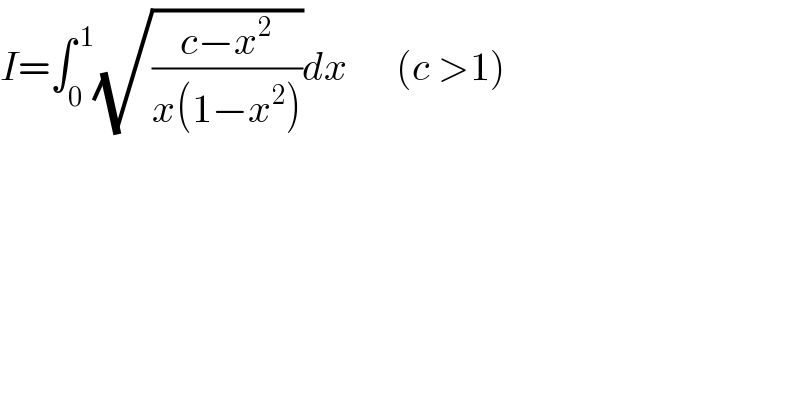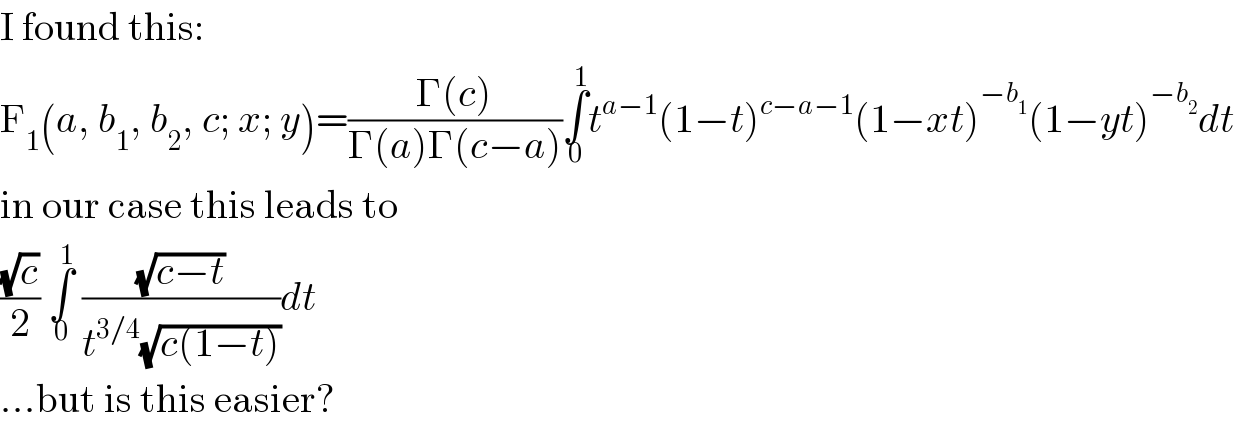
Question and Answers Forum
Question Number 68481 by ajfour last updated on 11/Sep/19

Commented byMJS last updated on 11/Sep/19

Commented byKunal12588 last updated on 12/Sep/19

Commented byKunal12588 last updated on 12/Sep/19

Commented byMJS last updated on 12/Sep/19
![((2x(√(1−x^2 ))(√((c−x^2 )/(x−x^3 ))))/(√(1−(x^2 /c))))=2(√(cx)) ⇒ [2(√(cx))F_1 (...)]_0 ^1 =2(√c)F_1 ((1/4); −(1/2), (1/2); (5/4); (1/c), 1)](Q68505.png)
Commented byMJS last updated on 12/Sep/19

Commented byMJS last updated on 12/Sep/19

